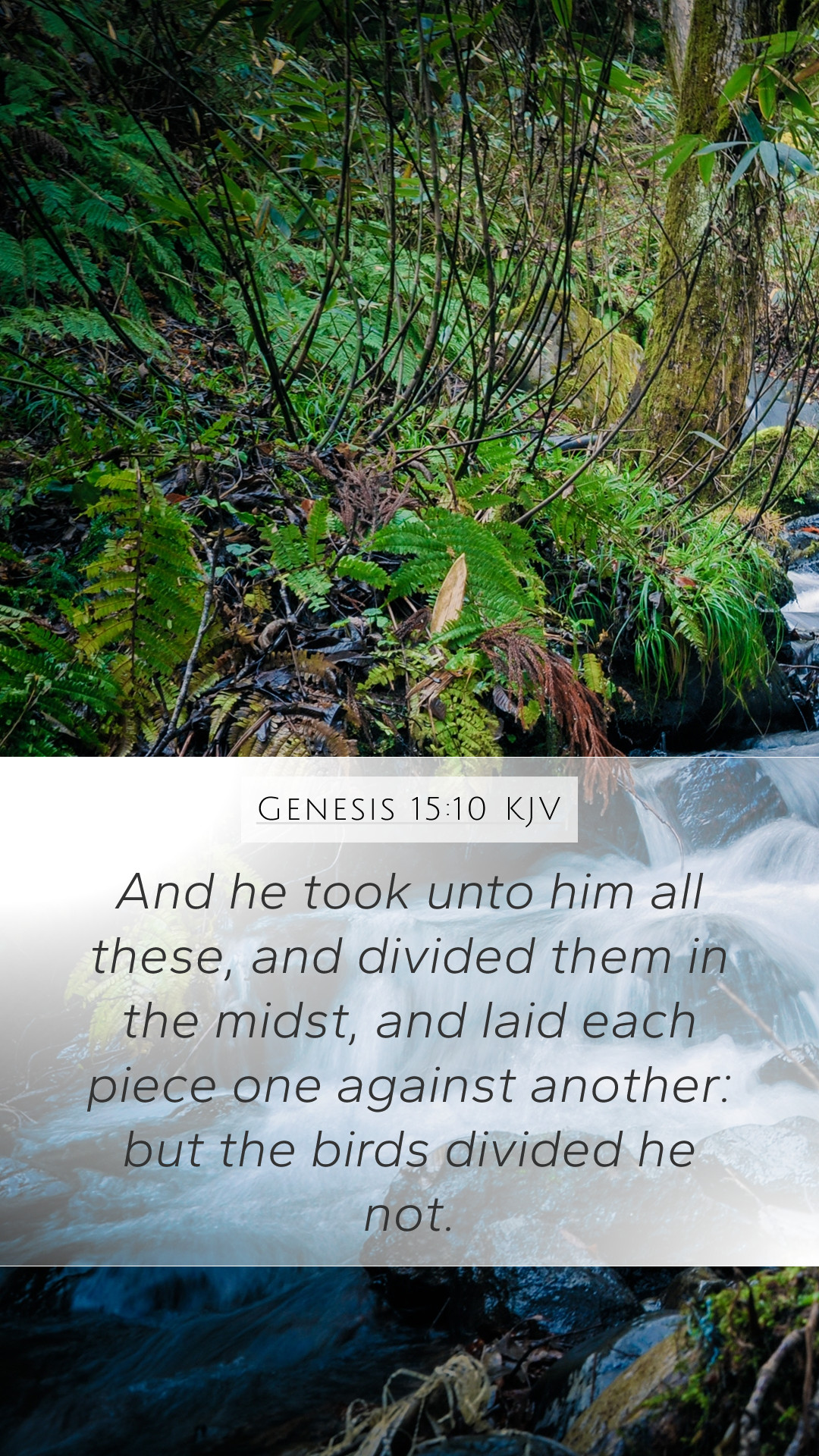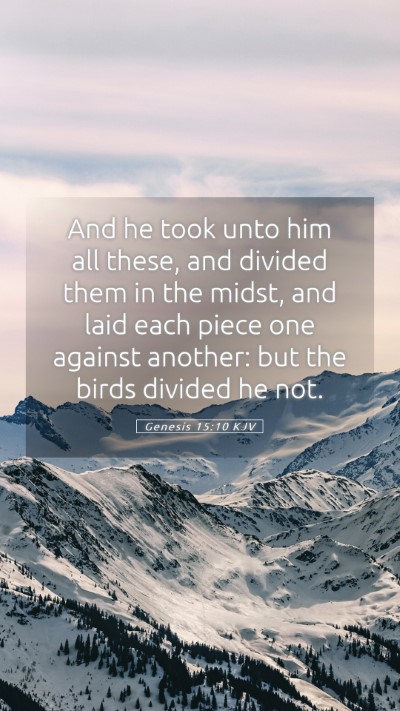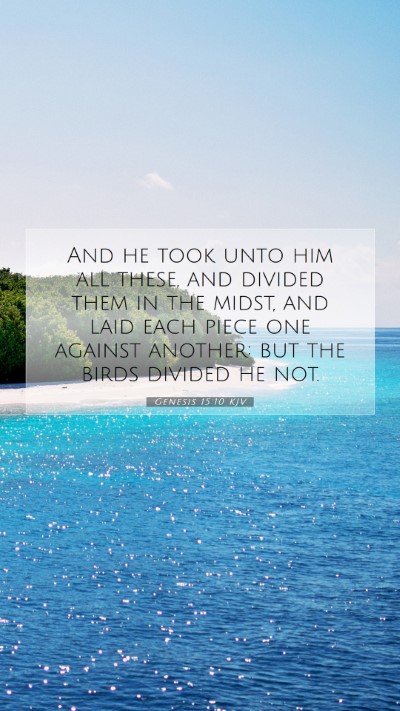Bible Verse Commentary on Genesis 15:10
The Bible verse Genesis 15:10 states:
"And he took unto him all these, and divided them in the midst, and laid each piece one against another: but the birds divided he not."
This passage is rich in meaning and significance, offering valuable Bible verse interpretations that can enhance our Bible study insights and deepen our understanding of Scripture. Below, we summarize key insights from prominent public domain commentaries to provide a comprehensive analysis.
Meaning and Context
Genesis 15 marks a pivotal moment in the narrative of Abraham, who is in conversation with God. In this chapter, God makes a covenant with Abraham, assuring him of descendants and land. The act of dividing animals is a profound part of the covenant-making process in ancient traditions, symbolizing a serious commitment.
Insights from Public Domain Commentaries
-
Matthew Henry's Commentary:
Henry emphasizes that the division of the animals signifies the solemnity of the covenant. According to him, this ritual acts as a powerful reminder of the consequences of failing to uphold the covenant, suggesting that just as the divided animals lie as a testament, so too does the covenant require faithfulness from both parties.
-
Albert Barnes' Notes:
Barnes provides an understanding of the specific animals used and their significance. He notes that the uncut birds might symbolize peace, contrasting with the sacrifice of larger animals. Each act of division illustrates God's intention to formalize his covenant with Abraham and the seriousness of the promises being made.
-
Adam Clarke's Commentary:
Clarke highlights the cultural customs surrounding covenant rituals of the time. He explains the traditional practice of animal division in covenant-making and connects it to the theme of sacrifice, which recurs throughout biblical history. He views this action as essential for establishing the seriousness of God's promises.
Historical Context
Understanding the historical background of this passage is crucial for proper Biblical exegesis. In ancient times, cutting animals in two was a common practice in covenant making, where both parties would walk through the divided pieces to signify their commitment to the terms stipulated.
This cultural insight helps illuminate the full weight of God's promise to Abraham, assisting readers in grasping the gravity of the divine commitment expressed throughout the chapter.
Symbolism and Application
The animals' division is a symbol of sacrifice and a precursor to the ultimate sacrifice depicted in the New Testament. The earlier sacrifices were shadows pointing toward the complete sacrifice of Jesus Christ, bringing to light the intertwined nature of the Old and New Testaments. In-depth Bible verse analysis reveals how such passages can inform our understanding of Jesus’ teachings about sacrifice and covenant.
This particular act can also prompt modern readers to reflect on personal commitments and the seriousness of our promises before God.
Cross References
- Hebrews 9:16-17 – Discusses the importance of a will being enforced only upon the death of the testator, connecting to the concept of covenant.
- Jeremiah 34:18-19 – References the development of covenants among the people of Israel.
- Matthew 26:28 – The blood of the New Covenant, highlighting the transition from Old Testament rituals to New Testament realities.
Conclusion
Genesis 15:10 signifies a pivotal moment in understanding biblical covenants, emphasizing themes of sacrifice, commitment, and the solemnity of divine promises. The insights from public commentaries deepen the meaning of Bible verses and can be applied to modern faith practices.
For those exploring Bible study topics or engaging in online Bible study, reflecting on this passage can offer profound insights into the nature of God's relationship with humanity and the importance of faithfulness to our commitments.


